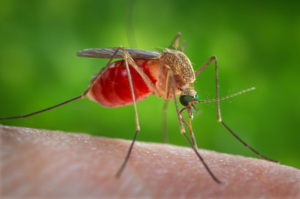Southern House Mosquito
Culex quinquefasciatus
Color: Yellowish
Size: 4 – 7 mm
Shape: Thin body, long wings, thin legs
Nutrition: Females need blood
Habitat: America, Africa, Asia, Australia

General Behavior
It is most active at night. They prefer to live in humid conditions.
They are more active in warm, tropical and subtropical climates. They are commonly found in urban and suburban areas.
Females lay their eggs on water surfaces. Larvae become adults in 7 – 10 days.
They are active within a 2 km radius of their breeding grounds.
Threats
The diseases they transmit;
West Nile Virus,
Lymphatic Filariasis
They transmit St. Louis Encephalitis by injecting their disease into the host.
The bites cause itching, swelling and rashes. Some individuals may have allergic reactions.
How Do We Recognize Infestation?
Recognizing Infestation
Stagnant water in the environment needs to be controlled. Movements on water surfaces indicate that there are larvae in it.
Live activities are seen at dawn and dusk.
Preventing and Managing Infestations
Water in areas with standing water such as containers and gutters should be drained.
If puddles cannot be dried, mosquito fish can be left in them.
Water left out for birds and pets needs to be changed regularly.
Windows and doors should be fitted with mosquito nets.
